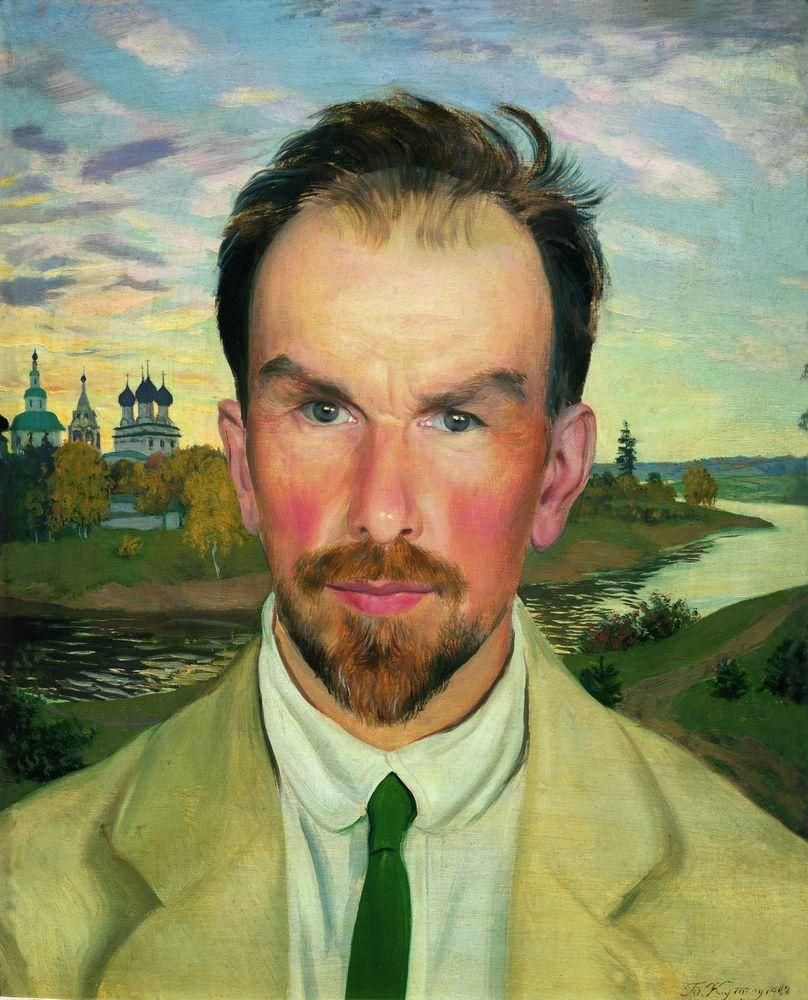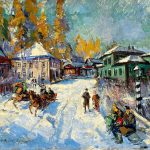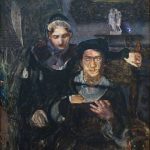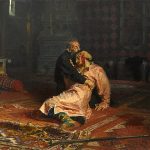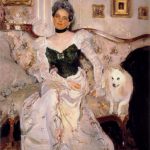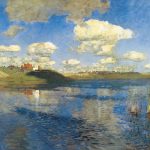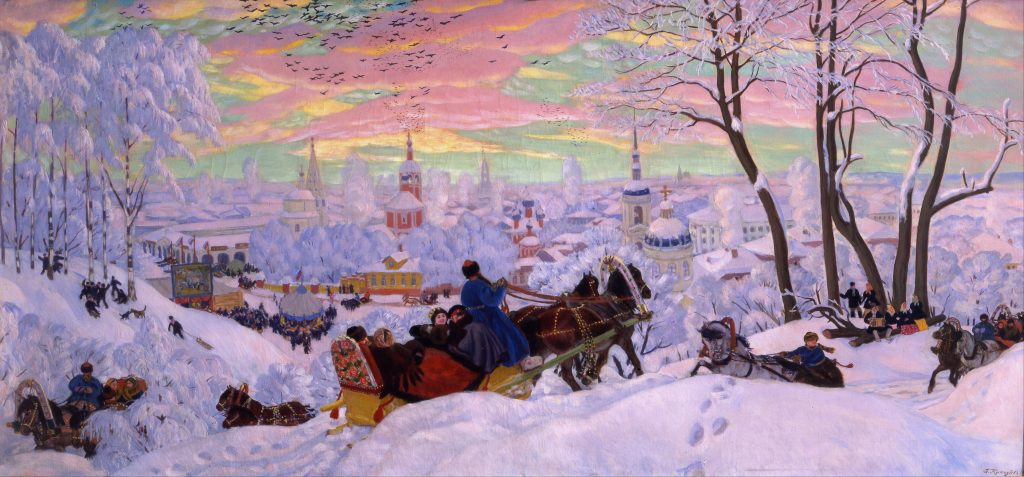
Boris Mikhailovich Kustodiev (March 7, 1878 – May 28, 1927) was a Russian painter and graphic artist known for his colorful and vibrant works that captured the essence of Russian life during the early 20th century. He is celebrated for his portrayals of people, landscapes, and festivals, often characterized by their lively and expressive style.
Early Life and Education: Boris Kustodiev was born in Astrakhan, Russia. He showed artistic talent from a young age and began his formal art education at the prestigious Imperial Academy of Arts in Saint Petersburg in 1896. At the academy, he studied under several influential Russian artists, including Ilya Repin.
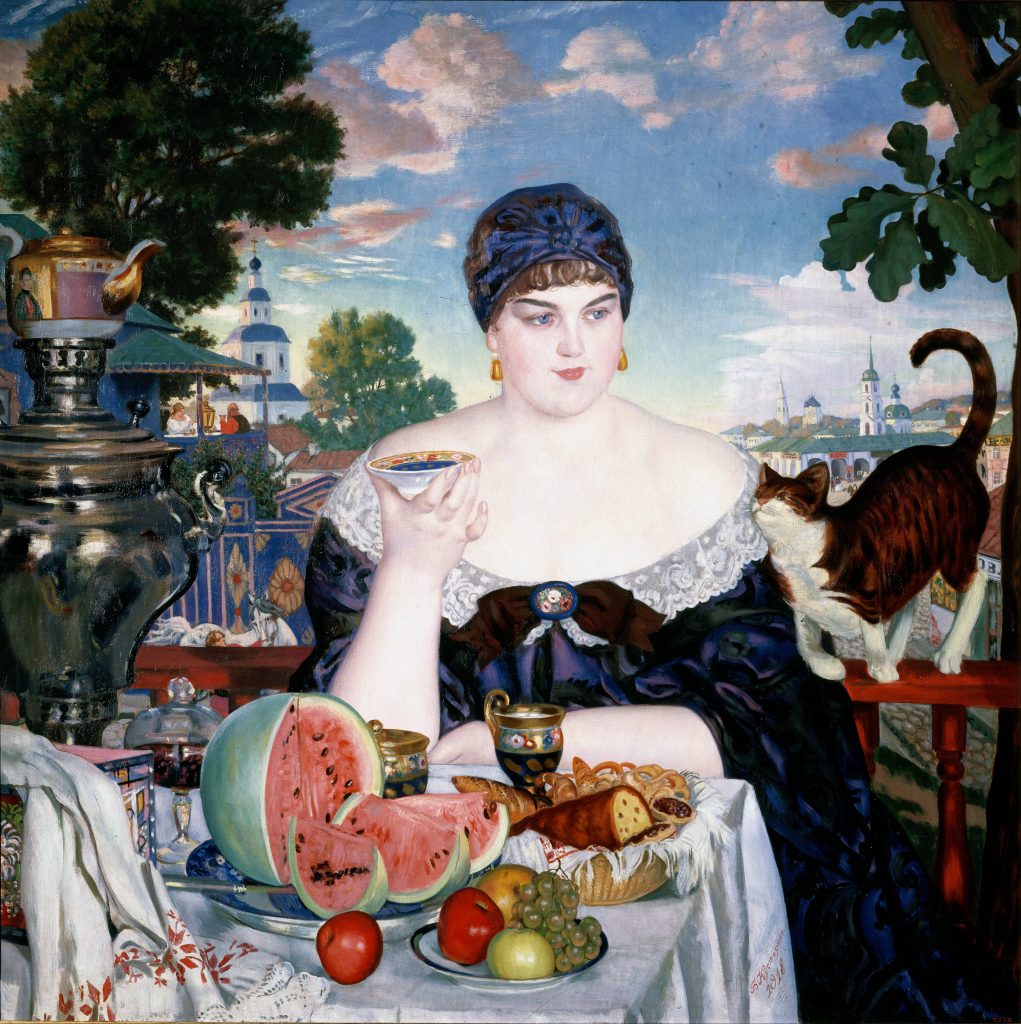
Artistic Style and Subject Matter: Kustodiev’s art is characterized by its vibrant colors and emphasis on the human figure. He often depicted scenes from Russian life, including peasants, merchants, and urban scenes. His works are known for their attention to detail, rich textures, and a sense of nostalgia for traditional Russian culture. His portraits and genre paintings reflect the warmth and humanity of his subjects.
Influence of Symbolism and Art Nouveau: Kustodiev’s work was influenced by various artistic movements of his time, including Symbolism and Art Nouveau. His paintings often had a dreamlike quality, with elements of fantasy and symbolism incorporated into his compositions. He had a knack for infusing his art with a sense of theatricality and emotional depth.
Illustration and Book Design: In addition to painting, Kustodiev was involved in book illustration and design. He created illustrations for works by Russian authors, including Gogol and Pushkin, and designed book covers and posters, contributing to the broader cultural and artistic scene in Russia.
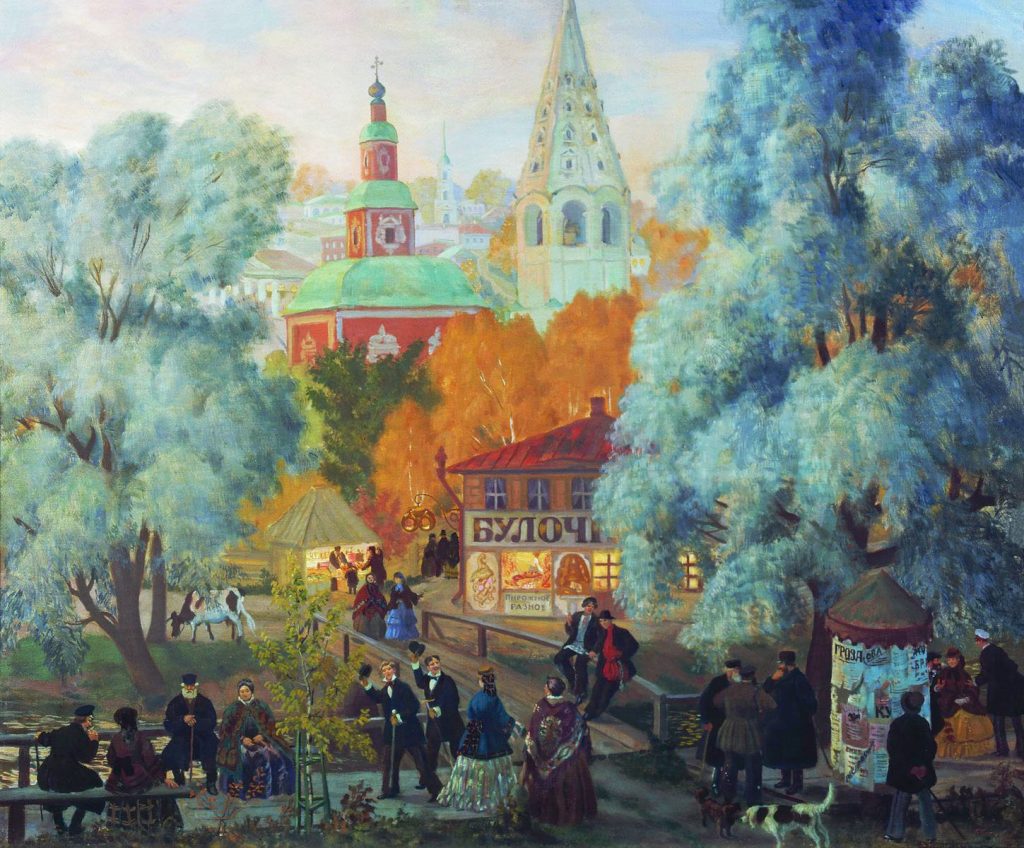
Recognition and Later Career: Kustodiev’s art gained recognition in Russia, and he became a member of the Union of Russian Artists, a prominent artists’ association. He exhibited widely, both in Russia and abroad, and received critical acclaim for his work. His art was celebrated for its ability to capture the spirit of pre-revolutionary Russia.
Health Struggles: In 1916, Kustodiev’s health began to deteriorate due to a severe illness, which left him partially paralyzed. Despite these health challenges, he continued to paint and remained active in the art world.
Legacy: Boris Kustodiev’s work is considered an important part of Russian cultural history. His paintings are cherished for their colorful depictions of Russian life and culture during a time of significant social and political change. His ability to evoke a sense of nostalgia for a bygone era and his skillful use of color and composition continue to captivate art enthusiasts worldwide.
Kustodiev’s legacy endures through his paintings, which are displayed in museums and collections around the world, and his contributions to the rich tapestry of Russian art in the early 20th century.
